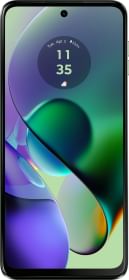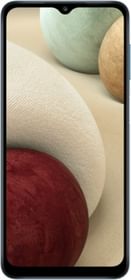If you ask a general consumer what feature matters the most to him, I am sure 99 percent will want a fabulous camera. On numerous occasions, when I place a new gadget in a regular consumers hand to get a second opinion, almost always the first thing they do is open the camera app and click a few shots. Yes, camera hardware matters and that is exactly what Zenfone Zoom is all about. (We will dwell more on this later)
In the past, Asus more or less lingered between the price band of Rs. 10,000 to 25,000 with its Zenfone series and in a way Zoom is its first ambitious attempt to stand up and compete with big boyz or flagships of tier-1 brands. Let’s discuss where Asus Zenfone Zoom stands in the league of premium phones and whether it really offers a close to DSLR experience in our detailed review.
Pros
- Great Zoom Camera
- Powerful performance
- Intelligent design
Cons
- Mediocre battery backup
- Zen UI feels cluttered
- A bit heavy for comfortable use
Key Specifications of Asus Zenfone Zoom:
| Model | Asus Zenfone Zoom |
| Display | 5.5-inch IPS HD display, 12080x720p, Gorilla Glass 4 |
| Processor | 2.5 GHz quad-core Intel Atom processor Z3590 |
| RAM | 4GB LPDDR3 RAM |
| Internal Storage | 128GB internal memory, 128GB MicroSD card support |
| Software | Android 5.0 Lollipop based Zen UI |
| Battery | 3000 mAh, fast charging |
| Rear Camera | 13MP Panasonic sensor, 10p Hoya lens, aperture range from f/2.7 to f/4.8, true tone flash, OIS, laser AF (claims 0.3 sec) |
| Front Camera | 5MP camera, F2.0 lens |
| Others | 4G, 3G, 2G, WiFi, Bluetooth and micro USB, NFC |
| Price | 37,999 INR |
Looks like a phone:
The biggest achievement with this phone for Asus has been its ability to ensure it looks like a phone. In the past, a number of smartphone manufacturer burnt their hands in some weird mishmash between DSLR and Phone. Despite carrying a Zoom camera it feels and looks like a premium phone. The phone feels heavy but that is acceptable trade-off for Zoom Camera. Asus has beautifully confined 3X optical zoom lens within the phone casing. Nothing protrudes out when you zoom. However, Chunky bezels flank the display and dent overall appeal of the phone.
Asus Zenfone Zoom has a refreshing design when we compare it to Zenfone 2. It doesn’t feel like a re-plug of Zenfone 2. Thanks to large camera module Asus had to ditch those annoying back panel volume rocker (rear key) and place them more conventionally on the right edge. Being a camera centric phone, Asus has added dedicated keys for shutter and video recording. The left edges are left untouched. Usage of premium grade metal with leather back cover ensures phone looks refined. Curved edges ensure phone looks sleek from the side even though it has a slight bulge at the centre. Overall, phone does offer a premium feel but isn’t very ergonomic in day to day usage. Sometimes, after prolonged usage, our hands hurt because of its sheer weight.
An alternative to point and shoot cameras
Over last one year, a lot has been talked about Asus Zenfone Zoom’s camera and company is leaving no stone unturned in promoting it that way. Companies marketing line “DSLR-level camera. PC-grade performance” sums it up very well. So, has Asus managed to match DSLR camera with this smartphone? A clear answer to this question is No. Having said that Zenfone Zoom is a step in the right direction for smartphone photography.
Asus Zenfone Zoom flaunts a 13-megapixel primary camera with 3X optical Zoom (28-84mm) fitted within the body. Its primary camera module consists 10p Hoya lens, f/2.7 to f/4.8 aperture, laser autofocus, OIS, and dual tone flash. Asus engineers quite intelligently placed a periscope type lens to restrain 3X optical zoom within the outfit.
The primary camera focuses really almost instantly even in full 3X zoom however, shutter speed doesn’t deliver same consistency. Occasionally, we noticed a slight lag in shutter which could prove annoying at times when you are in a hurry or in a moving vehicle and want to capture something special. In terms of image quality, it is quite cool. Although it doesn’t match DSLR quality but still images captured from Zenfone Zoom appears sharp with precise colours under natural light in outdoor conditions. The optical image stabilisation works efficiently. Zoom failed in disappointing us in low-light photography. In grim conditions too Zoom manages to charm us with its ability to focus quickly. However, like most smartphone low light camera images are a bit noisy.
The default camera app offers various shooting mode from HDR to Super Resolution to Depth of Felid mode to time rewind option. The 5-megapixel camera selfie camera has nothing extraordinary to offer like the primary camera. Being a photography centric smartphone, Asus failed to give enough attention to a secondary camera which in this age of selfies has become as important as the primary shooter. Images captured from selfie snapper lacks details and proper colour tones. Here are some of the sample images which we captured from both cameras.
Display and UI:
At a time when the world is running after 4K and 2K displays, Zenfone Zoom only manages to offer a full HD display with 403 ppi. The display quality is impressive for both indoor and outdoor viewing. The display doesn’t disappoint even direct under the sun as everything is easily legible. Watching multimedia content on the screen is a treat as it offers punchy colours with wide viewing angles and deep blacks. Speakers on the phone are loud enough for day to day life.
Personally, I never liked Zen UI in the past and my biases against it continue with this phone. The phone comes with lots of bloatware and useless apps cluttered in the app drawer. Initially, one has to suffer through 14 slides to setup his device for usage. The notification toggle icons are way too big for my liking and often confusing. Besides, the Zen UI is still based on Android 5.0 Lollipop and we don’t expect version update anytime soon.
Performance and Battery:
Zenfone Zoom specs sheet doesn’t offer anything mind-boggling yet it manages to deliver a satisfactory performance at par with other high-end phones. In our experience with the smartphone, we never witnessed any freezing issues our any sort of lag in performance mode turned on. In battery saver mode, phone does lag on occasions. The gaming experience on the phone is smooth and it doesn’t sweat or break down even with graphic intensive games. This Intel-powered smartphone also offers hassle free multi-tasking experience.
In day to day life for it manages to deliver a mileage of 12hours with moderate to heavy usage. The 3000mAh battery supports Asus BoostMaster fast charging technology which tanks up 0-60 percent battery in less than 40 minutes.
Conclusion:
Zenfone Zoom has many good things to brag about such as powerful performance, top-notch primary camera, sharp display yet it doesn’t justify the Rs. 38,000 price tag. A lot of contemporary hardware and software features are missing in this phone. Elementary features such as fingerprint sensor, USB type C, backlit capacitive keys and dual SIM support, which consumers value these days are missing.
Zenfone Zoom however, makes a strong case for itself if you are passionate about smartphone photography. May be after a couple of price-cuts Zenfone Zoom can become a more competitive option.


































